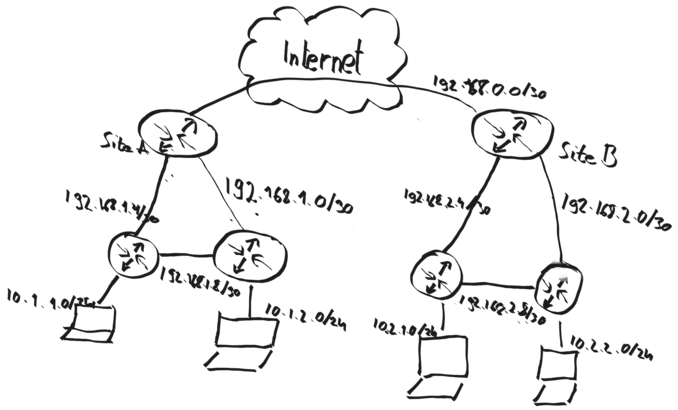Dynamic Routing: How To
Note
To keep this tutorial short, a configuration is only added a single time. For example, the configuration of Site A and Site B are identical beside one octet in the IP addresses. Also both routers have the same configuration except the Network address of the uplink and the client network.
Situation

We have two sites (Site A and Site B) which are connected via a layer 2 VPN. Each site has two additional routers, which are connected to the edge router and with each oder. On those routers, the clients are attached.
Configuration
In this setup, OSPF is used. All routers belong to the area 0.0.0.0 and no prefix lists are used.
Core Router of Site A
General Settings:
Setting |
Value |
|---|---|
Enable |
Checked |
Advertise Default Gateway |
Checked |
Passive Interfaces |
Empty |
Route Redistribution |
Empty |
Networks:
Network |
Network Mask |
|---|---|
192.168.0.0 |
30 |
192.168.1.0 |
30 |
192.168.1.4 |
30 |
Left Floor Router of Site A
General Settings:
Setting |
Value |
|---|---|
Enable |
Checked |
Advertise Default Gateway |
Unchecked |
Passive Interfaces |
Interface name of 10.1.1.0 |
Route Redistribution |
Empty |
Networks:
Network |
Network Mask |
|---|---|
10.1.1.0 |
24 |
192.168.1.4 |
30 |
192.168.1.8 |
30 |